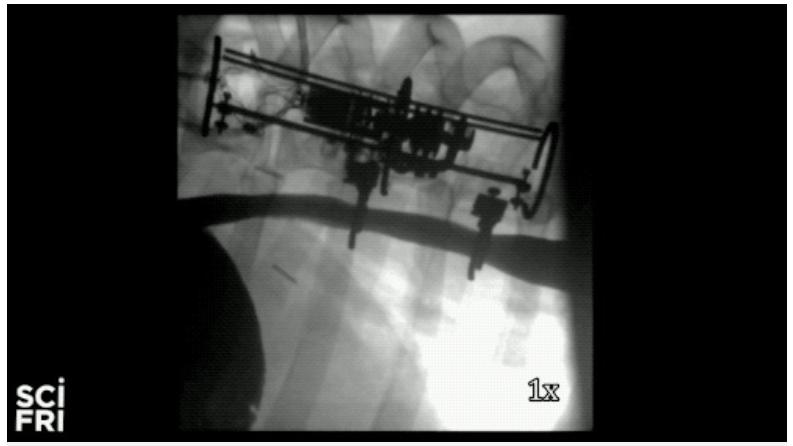New mechanical cell-manipulation technique could provide pathways into fixing disorders — even cancer
A soft robotic system that gently tugged on the esophagus of a pig proved to elongate the organ by 10 millimeters.
The signs have been there all along when it comes to using mechanical stimulation to stimulate regeneration and growth of tissue by simply pulling or pushing on cells. Think of a pregnant woman whose womb expands as the baby grows or a doctor telling a patient to lift weights to fight off osteoporosis by promoting bone growth.
How that mechanical stimulation can take place, though, has recently reached a whole new level, as evidenced by the recent academic paper published in the journal Science Robotics in which a team of researchers was able to fasten a small robot that gently tugged on the esophagus of a pig for nine days. The result? The pig’s esophagus expanded by 10 millimeters.
“It does look like mechanical tension is a powerful driving force on the physiology of the tissue,” says Dana Damian, a lecturer in automatic control and systems engineering at the University of Sheffield in England, and lead author on the paper. “And this signal that cells receive for this mechanical stimulation can regulate the [shape] of the cell.”
The robot works by using two rings to tug on both ends of the organ through a stretching motion that is regulated by a computer-application of traction forces. The stretching of the tissue — as the study found — induces growth inside of the tissue.
“We've long appreciated that physical forces regulate a lot of biology,” says David Mooney, a professor of bioengineering at Harvard University who has spent years conducting research in this field. “If you think about it, the cells in our bodies live in a very physical world. We walk around and gravity's always pulling on our tissues. There's blood flow through her heart and the vessels. So it makes sense that the cells would respond to these environmental signals and alter how they grow, they how they die and how they specialize in what kinds of functions that they might have.
“But what's really new here is now the extension of a lot of this basic knowledge into the ability to now apply defined mechanical signals and to try to drive regeneration and growth of new tissues."
Mooney says that the findings represent a great potential to treat human ailments once the technology can undergo trials in humans. He offers some more examples of that relationship of cells generating through physical forces on the tissue: getting braces at the orthodontist and certain therapies that call on specialized vacuuming techniques on top of the skin to promote healing.
"So there certainly is precedent for this that's out there. I think the exciting thing here is the ability to now take this into the body and use these soft robotic systems that are very different than the hard robots that I think most of us think about from the movies,” Mooney says.
Damian says that implementing a similar type of robot in humans depends on several factors, including the clinical condition that is being targeted. Her team is currently in the process of trying to design such a device that will also take its environment more into consideration. She compares controlling the robot during the research with the pig’s esophagus to guiding a rover on Mars.
“It is an inaccessible place and so once we place it there inside we need to make sure that it is going to work 100 percent of the time. I think there's a huge challenge. We need to go through many stages of design,” Damian says. “We want to have a robot that is both soft but is also durable.”
Although the trials for implementing a robot into a human organ still remain far down the road, Mooney says that the same pushing and pulling of cells on the outside of the body should be able to move more quickly to the trial phase by testing devices that induce regeneration of certain tissues.
“If you think about it, today many people already get massage therapy, which is in some ways similar to what we're talking about today where an individual pushes and pulls on tissues to try to alter them,” Mooney says. “Now in massage we typically don't know exactly what it is we're manipulating and it's also difficult, if not impossible, to have a defined and repeatable force done over and over again multiple days. But with the soft robotic [system] that you place outside the body, you can accomplish that.”
Damian says that the esophagus was chosen for the first soft robotic study because of its “rather simple soft tissue.” Her team plans on focusing its attention next on the intestines in the hope of being able to take on short bowel syndrome in which the small intestine is too small to function properly, impairing digestion in children.
One of the biggest beneficiaries of this mechanical manipulation technology could be the fight against cancer by pushing and pulling on cancer cells in a targeted area, Mooney says.
“Over the last decade or so there's been a tremendous amount of work that's shown that the mechanical environment of cancerous cells plays a really dramatic role in their further development of malignancy and their ability to move and migrate and colonize other parts of the body,” Mooney says. “So that actually is an area where there's a lot of research now to try to alter the mechanical environment of cancer cells to try to in essence either prevent them from being able to metastasize or perhaps even return them back to a normal state."
This article is based on an interview on PRI’s Science Friday with Ira Flatow.
